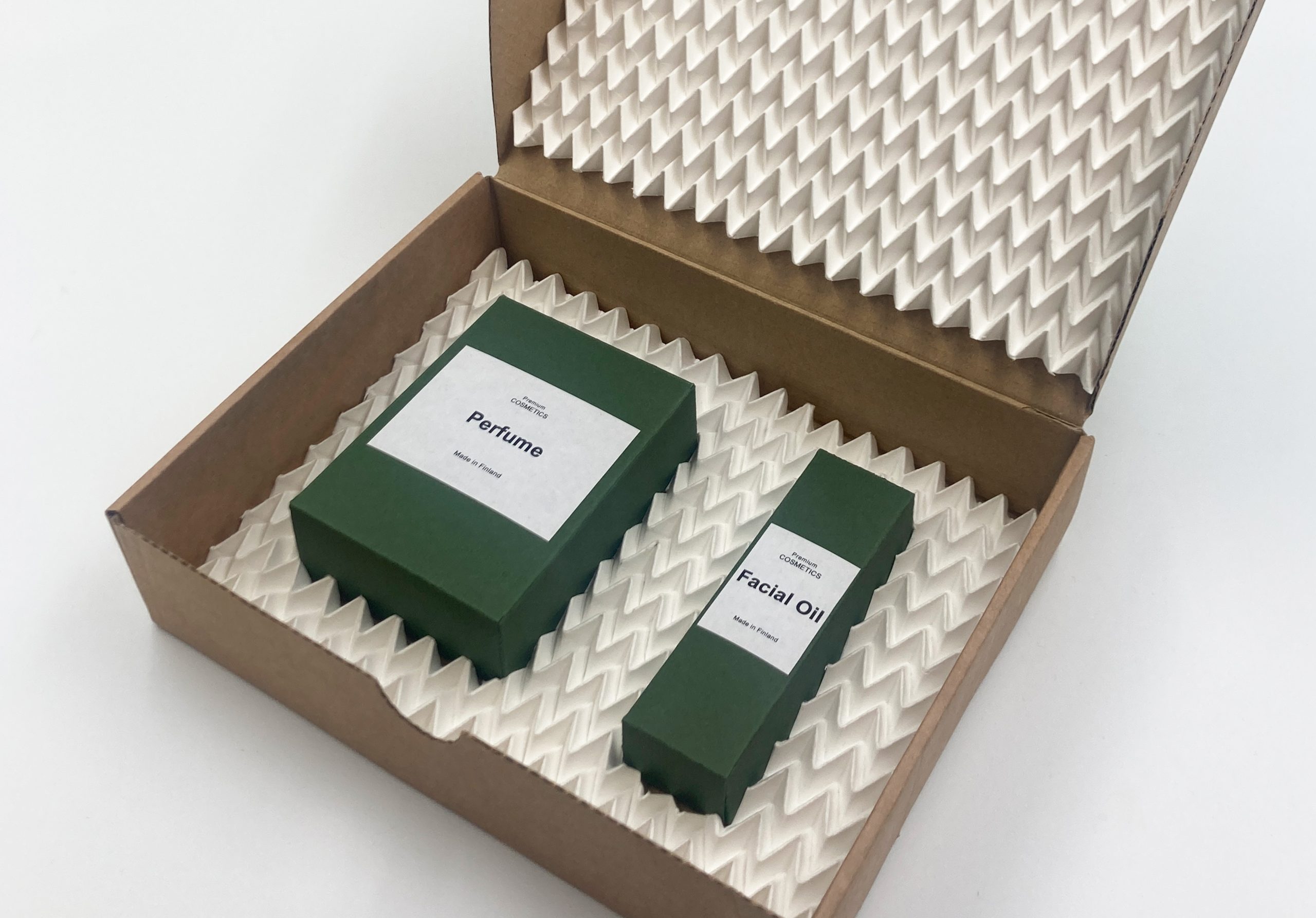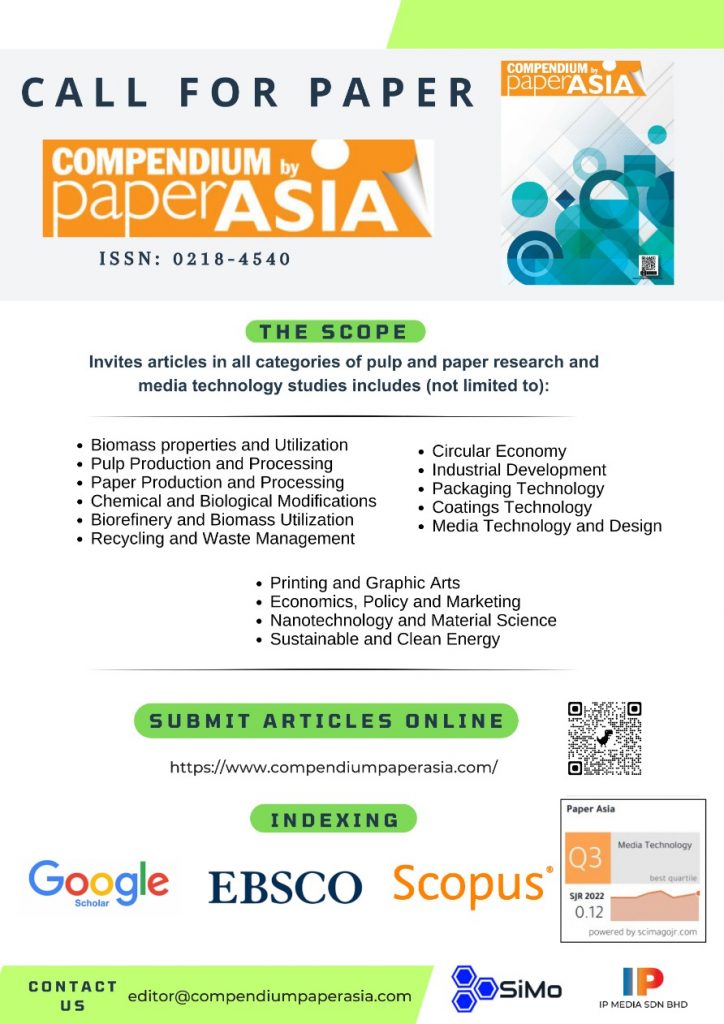VTT Launches New Origami Packaging Technology to Create Sustainable Lightweight, Durable and Eye-catching Alternatives to Conventional Protective Packing Materials
VTT Technical Research Centre of Finland, in collaboration with Aalto University and Finnish industrial partners, has developed a new technology for shaping cardboard in a unique continuous process to create reel-to-reel origami-inspired structures for fibre-based packaging materials. The origami folds have the capacity to yield entirely new properties from cardboard. The structures’ light weight and durability provide an excellent and visually appealing alternative to protective packing materials like plastic and expanded polystyrene. The aesthetics of the material have also garnered interest from designers.
The market for packaging materials continues to expand with the dominance of e-commerce. However, there is also rising concern over the carbon footprint of packaging as well as the composition of materials. For example, global sustainability issues like the potential environmental impact of microplastic pollution mean that demand for new, sustainable packaging solutions continues to rise.
Involving 13 different companies, organisations, and universities at various stages, the FOLD and FOLD2 projects are keystones in a quest to renew and expand how cardboard is used as a packaging material. The two-phase project began with designing a machine to fold the origami cardboard, with the next phase of the project set to begin testing other materials. The outcome has been a resounding success, leading to new applications of cardboard to manufacture packaging material that is flexible, durable, versatile and sustainable.
The technology of FOLD is completely unique in the world. Origami folding transforms cardboard into a flexible, protective, and visually appealing material unlike anything that’s previously been available for industry-wide production. The technology we’ve developed also has the capacity to produce foldable materials from recycled goods.
Jarmo Kouko, Creator of the FOLD Project and Research Team Leader at VTT
Kouko originally drew inspiration for the project while attending a packaging industry conference on various folding techniques. Traditionally, origami is handcrafted, with its intricate and complex folds often taking several hours to construct by hand. This intensive process would usually be a limitation for commercial packaging, but Kouko was inspired by the idea of mechanical folding that could refine materials into protective, lightweight and visually striking forms.
The solution mechanically replicates the hand-folding process, adding the benefit of consistent precision and quality that would be difficult to achieve by hand. Since the technology can be applied to a range of commercially available paperboard grades, it requires no changes in the materials used.
“The Japanese Miura origami pattern we’ve chosen is relatively simple, which makes it potentially suitable for folding many other materials. We have investigated the possibilities of developing techniques and models where felt or film made from PET, widely used in plastic packaging, could be shaped in the Miura form. We’ve also performed some preliminary testing for other materials, such as aluminium foil,” Kouko continues.
Industry collaboration for swifter commercialisation
Eight industrial companies were involved in the FOLD project, participating in both the development and funding. The current phase, known as FOLD2, began in March 2024 with continued support from a consortium of companies. The goal for the future is to expand the technology’s applicable usage to other materials and find partners across Europe for pilot projects, as well as global partners for the commercialisation phase after FOLD2’s completion.
“The packaging industry is very interested in FOLD, and close cooperation with various enterprises enables us to move quickly from the innovation phase to practical application. We could see origami cardboard on the market within 3-5 years if the project progresses as planned,” noted Jari Räsänen, R&D Manager at Stora Enso, one of the companies involved in the project.
Beautiful material inspires designers
In addition to its versatility and environmentally friendly qualities, the FOLD material also inspires designers. Demo packages made from the origami cardboard have already been showcased at the 2023 Design Weeks in Finland and the Netherlands, where the material was met with enthusiasm.
For example, in applications for luxury items, such as in the cosmetics industry, the aesthetics of the packaging are an important part of the customer experience. FOLD offers consumers a more premium unboxing experience that is also more environmentally conscious compared to traditionally used solutions like plastic bubble wrap and expanded polystyrene.
“Due to its interesting visual appearance and renewable material, origami works well in consumer products,” said Essi Arola from the Nordic skincare and cosmetics company Lumene.
“Folding cardboard opens up completely new possibilities for us when developing fibre-based packaging, for example, for the food industry. With our new Japanese owner, origami folds are a particularly interesting topic,” said Annika Sundell from packaging company Walki Group.
The material also sparks new research and practical solutions across multiple disciplines.
“This project is a good example of the power of multidisciplinary collaboration. Solving folding-related problems requires not only an understanding of the ideal geometric structures of mathematics but also knowledge of materials and modelling through design and engineering sciences. Unprejudiced hand-made prototyping has produced numerous new research questions alongside practical applications. In addition to packaging solutions, the project’s results are also suitable for, for example, abrasive products and interior structures,” summarised Kirsi Peltonen, a mathematics lecturer at Aalto University specialising in origami.
In addition to VTT and Aalto University, the FOLD project involved Anpap, Business Finland, Elomatic, Lumene, Metsä Board, Mirka, Orfer, Soften, and Stora Enso. The FOLD2 project involves VTT, Aalto University, Anpap, Business Finland, Marja-Suomen Taimituotanto, Mirka, Soften, Stora Enso, and Walki.
About VTT
VTT is a visionary research, development and innovation partner. It drives sustainable growth and tackles the biggest global challenges of our time and turns them into growth opportunities. VTT goes beyond the obvious to help the society and companies to grow through technological innovations. It has over 80 years of experience of top-level research and science-based results. VTT is at the sweet spot where innovation and business come together.



